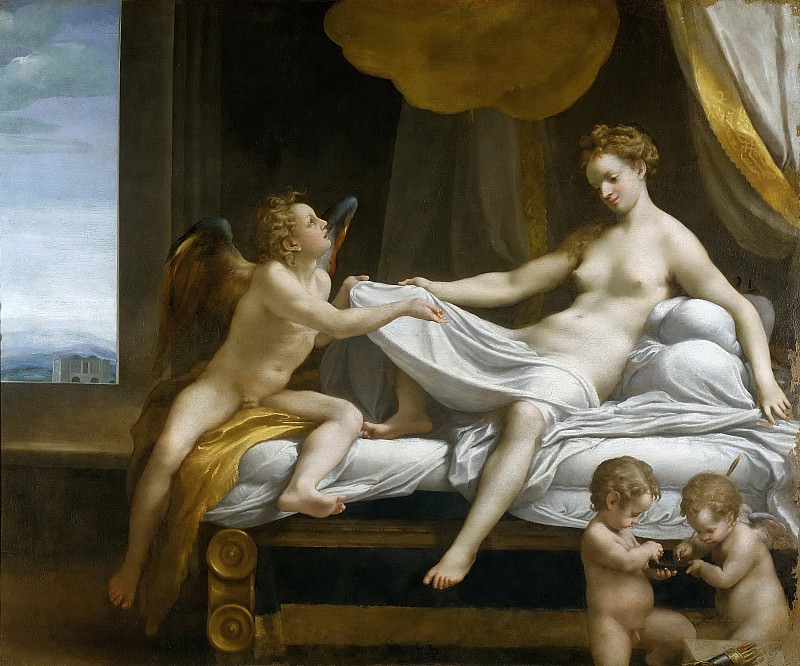Danae Correggio (Antonio Allegri) (1489-1534)
Correggio – Danae
Edit attribution
Download full size: 2800×2329 px (1,5 Mb)
Painter: Correggio (Antonio Allegri)
Location: Borghese gallery, Rome (Galleria Borghese).
There are a great many anecdotes about the great Italian painter, and it is difficult today to distinguish between truth and falsehood, between truth and fiction, between fantasy and reality. Some say that the painter did not study anywhere, that he simply wanted to write masterpieces - and began to write them; others contradict, arguing that Correggio studied to create, and studied very closely and meticulously from the recognized masters.
Description of Correggio’s Danaë
There are a great many anecdotes about the great Italian painter, and it is difficult today to distinguish between truth and falsehood, between truth and fiction, between fantasy and reality.
Some say that the painter did not study anywhere, that he simply wanted to write masterpieces - and began to write them; others contradict, arguing that Correggio studied to create, and studied very closely and meticulously from the recognized masters. Some claim that the artist was poor, that he was paid "pennies" for his work, while others claim that he came from an aristocratic background, was very rich and well-educated.
And many other disputes revolve around the artist, but one fact remains steadfastly true: the Italian is a true genius and master of light and shade, which immerses the viewer first in the center of the subject, and then allows him to take a break on the extraneous objects and images.
When Correggio paints the female body in the nude, he silently praises, nay, literally praises the beauty, elegance, charm, fascination, attractiveness, indeed the sexuality of women. We can clearly "hear" these dithyrambs in "Danaë" as well.
The ancient Greek myth of the divine beauty of the girl who fell in love with Zeus himself is known to many, and there is no point in retelling it. The viewer who knows the story understands that the winged Cupid is preparing the beauty for the arrival of Zeus, while the children at the couch, with their tiny unskilful hands, are writing something on a tablet, most likely the name "Danaë".
The small landscape outside the window and the sunset, the beauty of which envelopes the girl’s room, the calmness of the colors convey the divine light, which is about to appear with the arrival of the main god and illuminate Danaë. The latter’s delicate body and the whiteness of the sheets suggest that the beauty will soon fly away into heavenly spaces.
This work of art was presented to Charles V for his coronation. Today, "Danaë" is in the Galleria Borghese in Rome.
Кому понравилось
Пожалуйста, подождите
На эту операцию может потребоваться несколько секунд.
Информация появится в новом окне,
если открытие новых окон не запрещено в настройках вашего браузера.
You need to login
Для работы с коллекциями – пожалуйста, войдите в аккаунт (open in new window).














You cannot comment Why?
The painting depicts the mythological figure of Danaë, sprawled on a bed, partially covered by a white sheet. Her body is soft and inviting, with a gaze directed towards the viewer.
On the left side of the bed, a winged putto, or cherub, leans in towards Danaë, his hand reaching for her leg. He looks upward with an adoring expression. In the foreground, another two cherubs are engaged in play. One appears to be holding a bow and arrow, a common attribute associated with Cupid and love.
The scene is set within a richly draped interior, with a golden canopy overhead and dark, shadowy walls. A large window on the left reveals a distant landscape with classical architecture under a cloudy sky.
Subtexts: